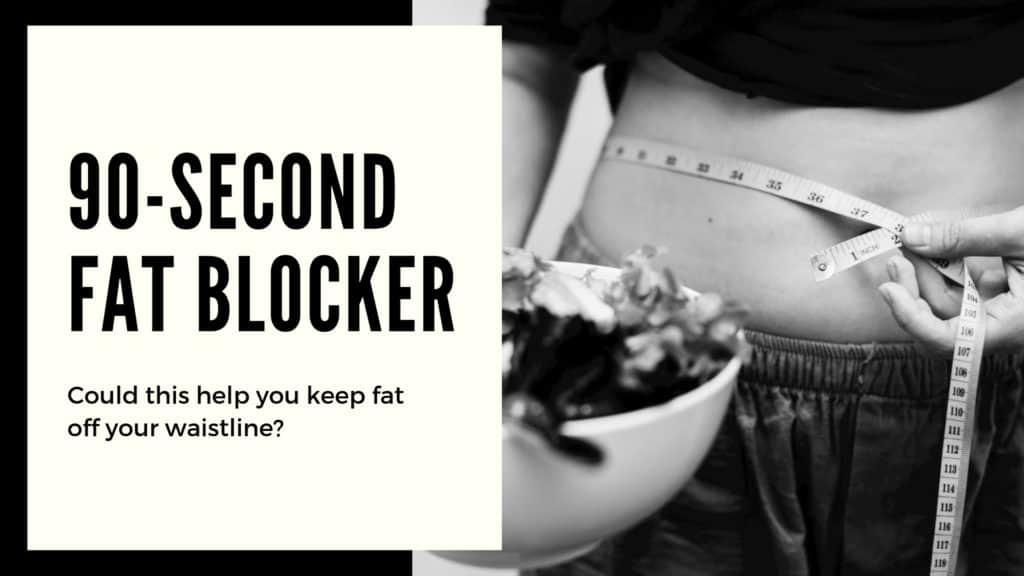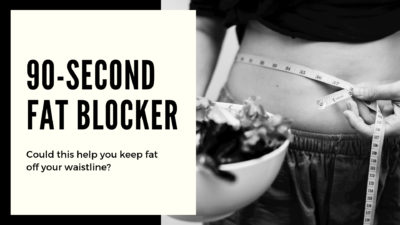
Man, that sounded like clickbait didn’t it? If you keep reading I will share with you one simple trick to add into your day to help you store less body fat. Oh, and it only takes 90 seconds. Interested?
If you just want to know your challenge for this week you can find it here. For the curious among us, let’s begin…
Any time we eat, our food gets digested, no news there. The reason our food is digested is that our body doesn’t really know what to do with those 6 chicken wings you just ate (I know I’m not the only one eating chicken wings). However, it does know what to do with the amino acids, glucose and fatty acids that make up those delicious wings. Let’s talk about that glucose for a second.
Glucose – The good, The bad and the ugly
WARNING: This gets a little sciency, but I have faith you’ll make it through
Our body loves to use glucose as a source of energy. Glucose mainly comes from the carbohydrates that we eat. But, if we are low on carbs, glucose can be created from proteins and fats in a process called gluconeogenesis. When oxygen and glucose are pulled into a cell together they are able to create energy through aerobic metabolism, don’t worry, there won’t be a test on this later.
This all sounds great! Our body needs glucose for energy, and it can make glucose from almost anything we eat, how could there possibly be a downside? Well, let’s say we consume more energy than we need. The body has two choices:
- Throw out the unused energy in a process that I won’t, and don’t think I need to explain, OR…
- It can save some of this energy for later.
How green of our bodies to be saving energy!
When acting properly, our body will fill our muscles with glucose and save it as glycogen. Think of these as little energy reserve tanks in all of our muscles. But the glucose needs to get into the muscle before it can be converted and stored.
Also, any the glucose the doesn’t make it into our muscles will be saved for later. Do you know where we like to store unused energy that is currently in the form of glucose? That’s right, in our fat cells.
But how does the glucose get into our muscle and fat cells anyway?
Enter GLUT-4
What in the world is GLUT-4??
GLUT-4 (or glucose transport protein) molecules are located inside our muscle and fat cells. They act as a ferry to bring the glucose from our bloodstream into our cells. The glucose molecules floating through our bloodstream can be absorbed into our cells as long as GLUT-4 is active and has moved to the surface of the cell. But what activates GLUT-4 you ask? Great question!
The two main activators of GLUT-4 are insulin and muscle contractions. After we eat our blood sugar rises. Assuming we have healthy pancreas function, our body will detect the elevated blood sugar and release insulin. Insulin binds to receptors on the cells and calls for the GLUT-4 to be brought to the surface to shuttle glucose into our cells. Sounds great right? In most cases it is. While insulin binds to our muscle cells it also binds to our fat cells. This means that in the presence of insulin your fat cells are able to absorb more, and the more they absorb the larger they become.
But what about muscle contractions?
Another way to stimulate GLUT-4 transportation in muscle cells is through muscular contraction (movement). By contracting our muscles we are opening our muscle cells to receive more glucose. Why is this good? When glucose goes into our muscles do you know where it doesn’t go? To your fat cells.
Long story short, muscle contractions stimulate muscles cells to translocate GLUT-4 to the surface of the cells making them more receptive to absorb blood glucose. In skeletal muscle, contractions lead to a several-fold increase in GLUT-4 Translocation.
“Well, that sounds wonderful… I think. But Kyle, what are you getting after with all this?”
I’m glad you asked!
Movement Challenge
This week, I would like for you to add a little movement into your lunchtime routine. Before you have a seat for lunch I would like for you to take 90 seconds to move. For 90 seconds I would like you to one of two exercises, Air squats or pushups.
But why would I ever ask you to do something odd like air squats and pushups? The two exercises I have selected are to activate the muscles in your upper body (pushups) and your lower body (Air squats). (can’t do pushups? you can place your hands on a wall and do a wall press) These exercises can be done almost anywhere, even though some places may earn you some funny looks.
True story, when I worked at the Mountain Times, to avoid the harassment of the group, I would do squats and pushups in the bathroom before or after lunch. I’m not sure if they ever knew, I guess they do now.
Why be weird at lunchtime?
The reason I would like for you to move pre and post lunch is precisely what we spoke about earlier. By creating muscle contractions before and after eating you will be moving GLUT-4 molecules to the surface of your muscle tissue. What this will do is make your muscles more available to absorb the glucose you just ate. If you can have more glucose headed into your muscle then there will be less to set up shop in your fat cells.
In conclusion
What a long write up for a quick tip!
I truly hope this helped a few people understand more of the method behind some of the madness that is these challenges. While on the surface they may seem random, deep down there are some profound things that we can make our bodies do. There are a lot of small, simple things that can be added into a daily routine to help your body perform better.
I truly believe that most people are only a few steps away from a vastly different life. I hope you enjoyed the long-winded post about energy metabolism and I hope this little addition helps you start to move in the direction you want to be in. I’m off to go grab a snack, but first… Squats.

